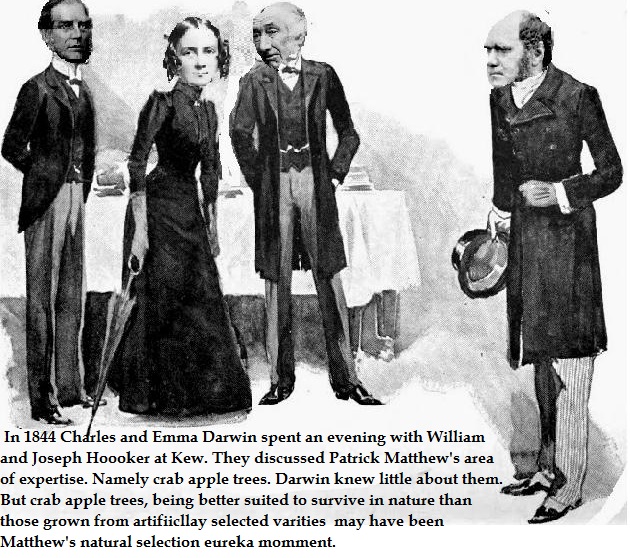The Darwin-Wallace presentation was one of seven that evening — one of the others was on the flora of Angola — and if the thirty or so people in the audience had any idea that they were witnessing the scientific highlight of the century, they showed no sign of it. No discussion followed. Nor did the event attract much notice elsewhere. Darwin cheerfully later noted that only one person, a Professor Haughton of Dublin, mentioned the two papers in print and his conclusion was "that all that was new in them was false, and what was true was old."

Wallace, still in the distant East, learned of these maneuverings long after the event, but was remarkably equable and seemed pleased to have been included at all. He even referred to the theory forever after as "Darwinism." Much less amenable to Darwin's claim of priority was a Scottish gardener named Patrick Matthew who had, rather remarkably, also come up with the principles of natural selection — in fact, in the very year that Darwin had set sail in the Beagle. Unfortunately, Matthew had published these views in a book called Naval Timber and Arboriculture, which had been missed not just by Darwin, but by the entire world. Matthew kicked up in a lively manner, with a letter to Gardener's Chronicle, when he saw Darwin gaining credit everywhere for an idea that really was his. Darwin apologized without hesitation, though he did note for the record: "I think that no one will feel surprised that neither I, nor apparently any other naturalist, has heard of Mr. Matthew's views, considering how briefly they are given, and they appeared in the Appendix to a work on Naval Timber and Arboriculture."












